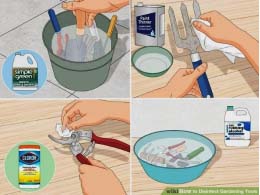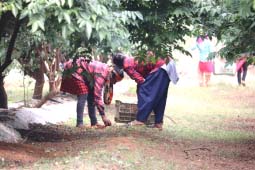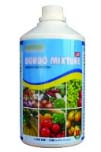What is Pruning?
Pruning is cutting of aerial part of the plant for following reasons:
- Removal of weak, diseased and criss-cross branches.
- Canopy management.
- Make branches stronger.
Materials required:
- Secateur
- Pruning Saw (Hard pruning)
- Bordeaux mixture/Fungicide
How to do pruning:
- Remove inner branches of the canopy to allow more light & air penetration within the canopy.
- Annually cut the weak, dead, diseased and over lapping branches after harvesting.
Ensure the following:
| Always use sharp secateurs and saw for cutting branches. |  |
| Disinfect the implements regularly. |  |
| Collect and dispose all plant debris after pruning. |  |
| Apply Bordeaux paste @ 1:1:10 on cut surface or spray copper oxy chloride @ 2gms/litre after pruning on the same day to prevent any fungal infection. |  |
Reason behind pruning of trees:
- Pruning fruit trees helps control their size and shapes & maintain their basic architecture.
- Pruning creates spaces in the tree canopy, allowing sunlight to penetrate and facilitate photosynthesis in the leaves. This process aids in the synthesis of carbohydrates and energy, promoting the growth of roots, shoots, and fruits.
- Inadequate sunlight penetration during the growing season can hinder flower bud formation, potentially affecting future crop yields.
- Pruning improves air circulation, reducing humidity and enhancing the effectiveness of protective treatments. It also minimizes branch crowding and reduces the amount of foliage within the canopy.
- Branches with angles closer to 90° from the central trunk and lateral shoots tend to develop greater strength. Narrow branches, on the other hand, are more prone to breaking under the weight of developing fruit.
- Pruning helps maintain a balance between the plant’s growth, flower production, and fruiting.
- Pruning supports tree health by preventing the spread of diseases and insect damage. This includes the removal and destruction of dead or infested wood.
References:
- https://treefruit.wsu.edu/web-article/pruning-and-training-systems/
- https://www.jaganhardware.com/falcon-anvil-prunner-economy-m3-lg0157.html
- https://www.agriculturesolutions.com/tri-edge-13-turbo-saw
- https://www.indiamart.com/proddetail/bordo-mixture-2512092391.html
- https://www.wikihow.com/Disinfect-Gardening-Tools#/Image:Disinfect-Gardening-Tools-Step-10-Version-2.jpg








